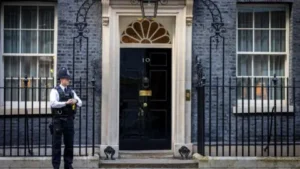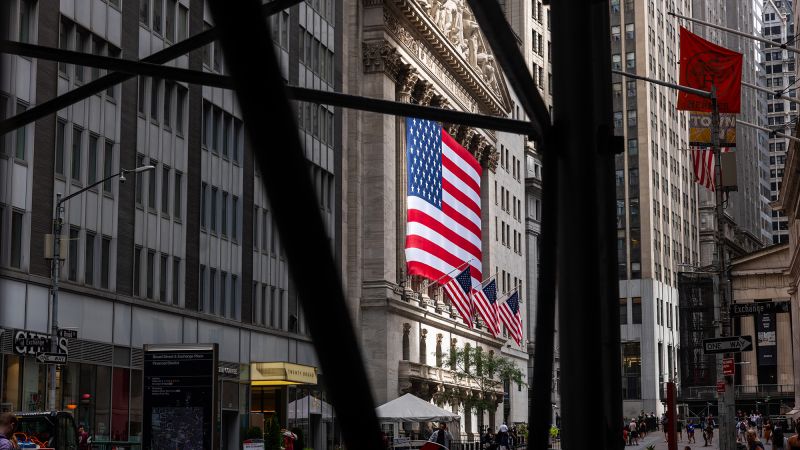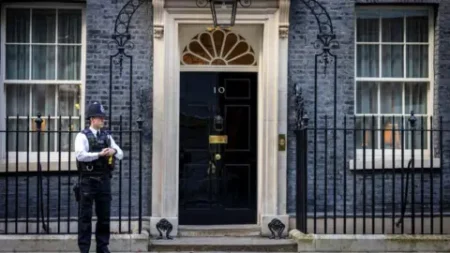In the complex realm of global economics, recent statements and actions by President Donald Trump have piqued the interest of investors and analysts alike. Trump has once again stirred the waters of trade and tariffs, threatening to reignite his infamous trade war. However, Wall Street, demonstrating a noteworthy sense of calm, appears less rattled by these developments than one might expect, given the historical context of Trump’s tariff policies.
On a seemingly routine Tuesday, the global markets exhibited a degree of composure following Trump’s recent announcement regarding tariffs. While the president proclaimed a new deadline of August 1 for imposing tariffs, he also indicated a willingness to engage in negotiations, which many investors interpreted as a positive sign. This tactical extension of the deadline offered a semblance of optimism, and as a result, stock markets across Asia, including those in Tokyo, Seoul, Hong Kong, and Bombay, opened on a generally positive note. In the United States, the markets responded tentatively, with mixed results; the Dow Jones Industrial Average faced a slight decline, while the S&P 500 and Nasdaq indices showed modest gains.
The muted market reactions signal a significant shift in investor sentiment compared to the turbulence witnessed in early April, which is often referred to as Trump’s “Liberation Day.” On that day, Trump’s announcement of “reciprocal” tariffs sent stocks into a downward spiral. Since then, many analysts believe that Wall Street has developed a robust resilience to tariff rhetoric, suggesting that investors increasingly view the president’s threats as negotiable rather than firm policy.
Market analysts like Tony Sycamore from IG Australia noted that the recent tariff news felt more like an “aftershock” rather than a seismic event. Trump’s statements regarding the new tariffs were described as less dire, reflecting a strategic approach to leverage negotiations rather than an outright declaration of war on global trade. During a press interaction at the White House, Trump emphasized that the deadline is “firm, but not 100% firm,” which adds ambiguity but also flexibility to the negotiation process.
Further underlining his approach, Trump commented that the tariff letters served as “final offers,” yet left open the possibility for alternate negotiations. This nuance in his statements suggests that there is room for diplomacy, and it is this potential for negotiation that investors are eager to capitalize on. Quotes from analysts like Kurt Reiman at UBS Global Wealth Management emphasized that this iteration of tariff announcements seemed less threatening, marking a shift from previous precedents.
As investors observed these developments, many adopted a “TACO trade” strategy, betting confidently that Trump might retract aggressive tariff threats if faced with negative market consequences. Sycamore humorously referred to the possibility of “TACO Tuesday,” a nod to the president’s trade announcements, suggesting a cycle of threats and negotiations rather than a clear-cut war.
Despite the disruptions caused by Trump’s initial tariff announcements, which led to a slight drop in U.S. stocks, the overall decline was relatively contained. This juxtaposition of limited immediate impact against the backdrop of potential future policies illustrates a wider trend: Wall Street seems to have largely internalized and contextualized Trump’s fluctuating tariff strategies. Observations from Frederic Neumann of HSBC revealed that markets continue to exhibit an optimistic viewpoint, partially due to an extended negotiating horizon.
Additionally, the overall sentiment among investors reflects a comprehension that tariff uncertainties are merely one cog in a larger machine, which includes other economic indicators. The S&P 500 has recently reached record highs, demonstrating a robust investor confidence that transcends tariff anxiety. Banks like Bank of America and Goldman Sachs have both adjusted their year-end forecasts for the S&P 500 upwards, indicating an expectation of bullish trends bolstered by monetary policy easing and fundamental strength in large U.S. corporations.
Nevertheless, some analysts caution against complacency, suggesting a potential overconfidence among investors given the ongoing uncertainties surrounding tariffs. Observations suggest that Trump’s triumphs, coupled with a buoyant market, could result in an increased inclination to pursue more stringent tariff policies. As inflation data is poised for release in the coming weeks, these figures may further elucidate the broader economic impacts of these decisions.
In summation, while President Trump’s talk of tariffs and trade persists, Wall Street appears to have adapted to a rhythm of negotiation and uncertainty. Investors are likely to continue dancing to this tune while keeping a watchful eye on evolving economic indicators and potential diplomatic developments in the realm of international trade.











